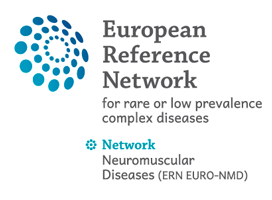26 Jan 2020
Circulating MyomiRs as Potential Biomarkers to Monitor Response to Nusinersen in Pediatric SMA Patients
Authors:
Silvia Bonanno, Stefania Marcuzzo, Claudia Malacarne, Eleonora Giagnorio, Riccardo Masson, Riccardo Zanin, Maria Teresa Arnoldi, Francesca Andreetta, Ornella Simoncini, Anna Venerando, Cinzia Gellera, Chiara Pantaleoni, Renato Mantegazza, Pia Bernasconi, Giovanni Baranello and Lorenzo Maggi
Spinal muscular atrophy (SMA) is an autosomal recessive disorder caused by mutations in survival motor neuron (SMN) 1 gene, resulting in a truncated SMN protein responsible for degeneration of brain stem and spinal motor neurons. The paralogous SMN2 gene partially compensates full-length SMN protein production, mitigating the phenotype. Antisense oligonucleotide nusinersen (Spinraza®) enhances SMN2 gene expression. SMN is involved in RNA metabolism and biogenesis of microRNA (miRNA), key gene expression modulators, whose dysregulation contributes to neuromuscular diseases. They are stable in body fluids and may reflect distinct pathophysiological states, thus acting as promising biomarkers. Muscle-specific miRNAs (myomiRs) as biomarkers for clinical use in SMA have not been investigated yet. Here, we analyzed the expression of miR-133a, -133b, -206 and -1, in serum of 21 infantile SMA patients at baseline and after 6 months of nusinersen treatment, and correlated molecular data with response to therapy evaluated by the Hammersmith Functional Motor Scale Expanded (HFMSE). Our results demonstrate that myomiR serological levels decrease over disease course upon nusinersen treatment. Notably, miR-133a reduction predicted patients’ response to therapy. Our findings identify myomiRs as potential biomarkers to monitor disease progression and therapeutic response in SMA patients.

